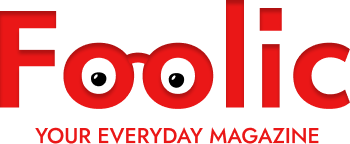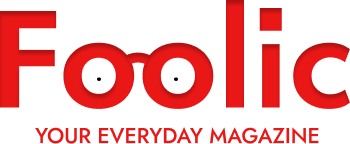IoT (Internet of Things) is a digital platform that connects the data network, access points and, edge hardware to the end-user applications. The online platform serves as support software, also referred to as middleware solutions. In the network world, often the question comes up which is the best IoT platform, and why? At times, you may need an IoT platform that will take care of the connections between your IoT devices. Along with that, there will be the need for application development capabilities and machine learning models. IoT can work with or without advanced analytics. Among the third-world countries, India stands in a good position concerning technological development. Many IoT App Development Company provides services to companies worldwide.
The blog will discuss some of the critical components of IoT platforms and what should be the base of your choice of an IoT platform?
The Key Components of an IoT Platform,
The IoT Platform is a multi-layered software solution. The software can simplify the processes of several different IoT devices with multiple services. Companies and firms are worldwide spending on IoT to upgrade their services. The building blocks of an IoT are mentioned described below,
Connectivity
Connectivity is one most powerful tools of any IoT development program. On the initial level, an IoT platform seems to be simple as a software infrastructure that enables and monitors the connection between the elements in the physical world. In today’s complex connective environment, only strong connectivity allows secure incorporation of multiple IoT devices and manages multi-network connections.
An IoT platform also contains a connectivity layer with different types of services. The connectivity is not only restricted to data connection, control and monitoring.
Cloud Computing Services
A cloud backend is necessary to handle a large amount of data in the business IoT settings. The cloud computing system safely streamlines the storage, data collection, data processing and, analytics. Edge Computing Implementation has been an effective tool for handling network gateways, data centers, and different IoT activities.
IoT Data Management
Data Management is developing, executing, and monitoring the architectures and software that boost the data availability value. The management system is not restricted to only logging, processing, transaction, and storage. IoT data management keeps an eye on different types of information coming from various locations. Data management of the Internet of Things also includes storage, process, and analysis.
IoT Device Management
IoT device management can cover the whole lifecycle of an IoT device. The management process includes device identification, device registration, authentication, updates, remote administration, troubleshooting, restart, etc. This way, you can monitor overall your assets from a single platform.
Security by Design
The majority of IoT platforms are designed with solid security features. These platforms guaranty the clients with high security and safety. Data integrity, extra protection of certain data types, safeguarding privacy, authentication, encryption are the different layers of the security system of the IoT platforms.
Application Enablement
This tool provides an active management system to trigger automated jobs and services, including applying logic to the execution of specific tasks to coordinate data flow. Developers and collect and manage custom applications with the help of Application Enablement.
IoT Platforms
Similarly, like markets, there exist different IoT platforms based on their services offered to the end-users. Some platforms manage customers’ needs, whereas some IoT platforms manage the industrial applications and provide services to the manufacturing, finance, automotive and agricultural sectors.
An IoT platform must provide M2M communication, real-time intelligence, end-to-end security, and interoperability in today’s digitalized world. The platforms are also expected to have Artificial Intelligence capabilities and Machine Learning.
Different types of IoT Platforms are available in the market,
Device Management
Device Management stands at a top position among different types of IoT platforms due to diverse assets. The IoT device management platform has set itself up as a must-use device in the last few years.
The capabilities of an IoT device management platform are,
- Device Authentication
- Device Provision
- Logging
- Remote Monitoring
- Remote Administration
- Software updates
- Strong Security
- Troubleshoot
Connectivity Management
This is one of the top-notch IoT platforms with high specialization and popularity. Connectivity management engages connection management and different connection services to the IoT devices. This system involves orchestration. The services provided by Connectivity Management,
- Connection Management
- Invoice Management
- The connection between sensors and server
- Data rate management
Analytics Focus
Analytics Focus collects the IoT data calls and monitors the harvest proves of massive data volumes and ML solutions. The platform possesses the data storage capacities for structured and unstructured data.
The essential services of the IoT analytics platforms are,
- Collection of data via a compatible communication protocol
- Data processing with the creation of long-term data histories
- Advanced data analytics capability to identify the relations within the IoT data
- Flexible reporting and customization of data visualization tools.
IoT Orchestration Hub
At present, the maximum of the IoT platforms is a blend of multiple services instead of being focused on only connectivity management or device management. This much more vital tool becomes comprehensive with time. The services change from the end of the platform from time to time. Sometimes, the platform only covers a portion of the value chain, and again it can provide an end-to-end solution in just one call.
In an IoT orchestration hub, all services around the Internet of Things come together. These platforms take care of connectivity, remote monitoring, transplant data management, and data processing. The hubs are mostly cloud-service-centric, so scalability also serves an important role. The key features of the IoT Orchestration hubs are,
- Communication Management
- Forward capabilities
- Device Management
- A bond with analytics services
Application Enablement Platforms
Mobile application Enablement Platforms can develop customized IoT solutions with particular emphasis on data process. The platform features several inbuilt applications or uses external applications.
The features of the Application Enablement Platforms are,
- Rule engine
- Customizable
- Strong underlying structure
IoT Development Platform
The IoT Development Platform focuses on community building and collaboration. The key features of the IoT Development Platform are,
- OTA development in a cloud IDE
- Live development of IoT applications
- Blend with external repositories
- Application marketplace
- Collaborative and community features
End-to-End IoT Platform
End-to-end IoT platform strengthens and performs all the services beyond the IoT value chain. This platform is best suited for various cases that transcend the industry border. The platform must possess the capacity to deal with large-scale industrial IoT solutions with a touch of flexibility.
To Conclude,
The blog has presented features of different IoT platforms before us. The concept is, indeed, a bit complex. There are different possibilities and potentials. So, it is up to you what IoT platform you would like to use after having a detailed view of them.


